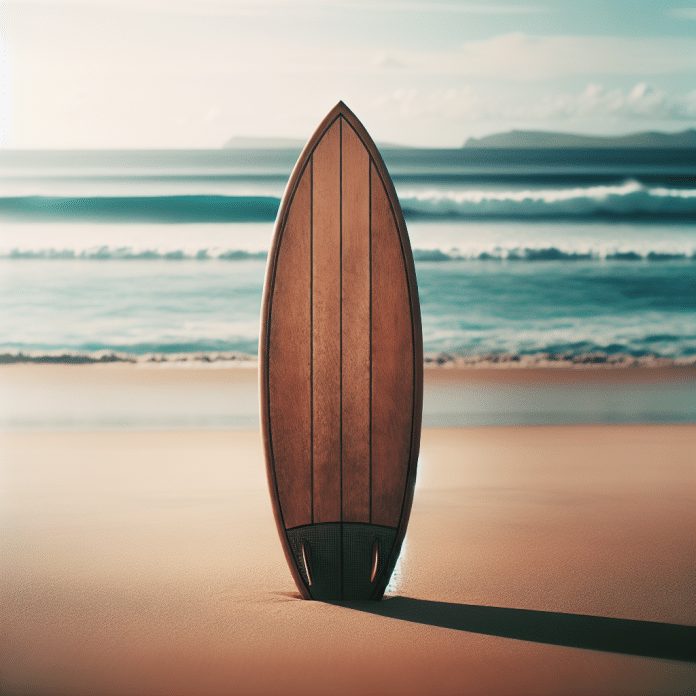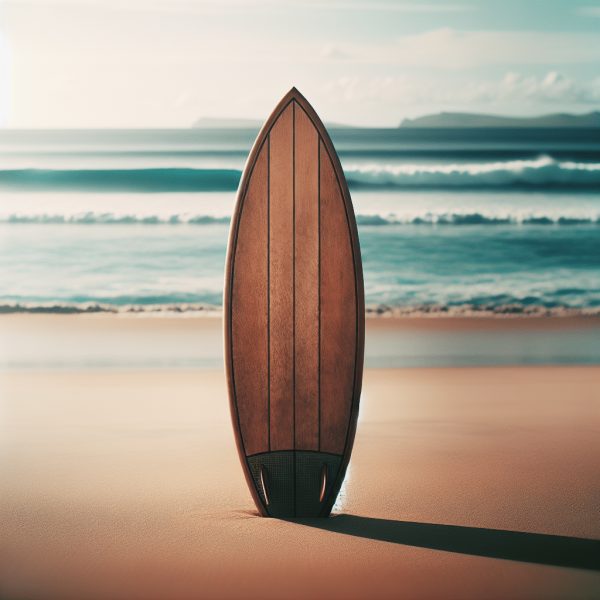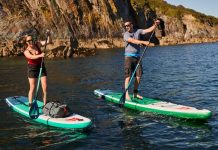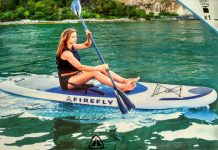Surfing Catch Your First Wave – A Guide to Surfing will take you on an exhilarating journey into the world of surfing, providing all the necessary tips and tricks to catch your very first wave. From choosing the right board to mastering the art of paddling, this comprehensive guide will equip you with the knowledge and confidence needed to take on the waves. Whether you’re a complete beginner or looking to refine your skills, this article is sure to make your surfing experience a memorable one. So grab your board and get ready to ride the waves like a pro!
Surfing Basics
Understanding Surfing
Surfing is a thrilling water sport that involves riding waves using a surfboard. It originated in ancient Polynesia and has since gained popularity worldwide. Understanding the basic principles of surfing is essential for beginners. The key to successful surfing lies in the ability to balance on the board while utilizing the natural energy of the waves.
Choosing the Right Surfboard
Picking the right surfboard is crucial for beginners. There is a wide variety of surfboards available, each suited for different skill levels and wave conditions. As beginners, it is advisable to start with a longboard, as it provides stability and ease of paddling. Longboards are also better for catching small waves, making them ideal for beginners to gain confidence and practice their skills.
Essential Surfing Equipment
Apart from a surfboard, there are a few essential pieces of equipment that every beginner surfer should have. These include a leash, which attaches the surfboard to your ankle and ensures you don’t lose it in the water. Additionally, a wetsuit or rash guard is necessary to protect your body from the cold water and harmful UV rays. Finally, a good pair of surf wax is vital to provide traction on the board, preventing you from slipping off.
Getting Started
Finding the Right Surf Spot
Finding the right surf spot is crucial for beginner surfers. Look for spots with gentle, manageable waves suitable for beginners. These spots are often indicated by a sandy bottom and are known as beach breaks. Do some research and seek advice from experienced surfers or local surf schools to find the best locations for beginners in your area.
Checking Wave Conditions
Before heading out to surf, it’s essential to check the wave conditions. Factors to consider include the size, direction, and speed of the waves. Websites, surf reports, and mobile apps are valuable resources for obtaining accurate and up-to-date information about wave conditions. It’s important to remember that surfing in conditions beyond your skill level can be dangerous, so always assess the conditions realistically.
Understanding Surfing Etiquette
Surfing has its own set of unwritten rules and etiquette that every beginner should follow. Respecting other surfers in the water is crucial to maintaining a friendly and safe atmosphere. Some key rules include respecting the lineup, taking turns on waves, and avoiding “dropping in” on fellow surfers. Remember that the ocean is for everyone to enjoy, and by practicing good etiquette, we can ensure an enjoyable experience for all.
Paddling and Positioning
Correct Paddling Technique
Mastering the correct paddling technique is essential for efficient and effective surfing. Lie on your board with your body positioned towards the front, and paddle with cupped hands using your arms, rather than just your hands. This technique generates more power and helps propel you through the water. Make sure to practice paddling regularly to build strength and stamina in your upper body.
Positioning Yourself on the Board
To maintain balance and stability on the board, positioning yourself correctly is crucial. Lie flat on your surfboard with your chest centered on the board, and your feet extended towards the back. As you paddle, maintain your weight towards the middle of the board to ensure stability. Adjust your position according to wave conditions, leaning forward when paddling onto a wave and shifting backward to avoid nose-diving.
Reading the Waves
The ability to read and understand waves is a skill that will enhance your surfing experience. By observing the behavior of the waves, such as their size, shape, and speed, you can anticipate when to paddle and catch a wave. Look for a steep, peeling wave with an open face rather than a closeout wave. Additionally, understanding how to identify the take-off zone, where waves break and produce an ideal rideable section, is crucial for positioning yourself correctly.
Catching Your First Wave
Timing and Coordination
Catching your first wave requires good timing and coordination. As you paddle towards an approaching wave, it’s important to anticipate its arrival. Begin paddling just before the wave reaches you, matching its speed. By timing your paddle strokes and coordinating your movements, you can increase the chances of catching the wave and riding it successfully.
Popping Up on Your Board
When catching a wave, it’s essential to quickly transition from lying on your board to standing up. This technique, known as “popping up,” requires swift and coordinated movements. Start by placing your hands near your chest and simultaneously pushing your body up, while swiftly bringing your back foot forward and planting it towards the tail of the board. Follow by bringing your front foot up and positioning it between your hands.
Maintaining Balance and Control
Maintaining balance and control while riding a wave is essential for a successful surf. Keep your knees slightly bent, distribute your weight evenly, and keep your gaze fixed on the horizon. This helps maintain stability and allows you to respond to the movements of the wave. Remember to relax and go with the flow of the wave, making subtle adjustments to your body position as necessary.
Riding the Wave
Understanding Wave Energy and Power
Understanding wave energy and power is crucial for effectively riding a wave. Waves derive their power from the movement of water and can vary in intensity. Larger waves contain more energy and provide a faster ride, while smaller waves are more manageable for beginners. By recognizing the energy and power of a wave, you can adjust your technique and maximize your enjoyment while riding.
Trimming and Controlling Speed
To successfully ride a wave, it’s important to maintain speed and control. Trimming is the technique used to control your speed by subtly adjusting your position on the wave. By shifting your weight forward or backward, you can speed up or slow down, ensuring you stay in the sweet spot of the wave. Additionally, practicing small adjustments to your body position and angling across the face of the wave can help maintain control and balance.
Performing Basic Surfing Maneuvers
As you progress in your surfing journey, you can start experimenting with basic surfing maneuvers. These include bottom turns, where you redirect your board and change direction by carving a turn at the bottom of the wave. Another maneuver is the top turn, performed by pivoting your board vertically to change direction at the top of the wave. Practice these maneuvers to enhance your surfing skills and add variety to your rides.
Safety Tips
Understanding Rip Currents
Rip currents are powerful, narrow channels of water that flow away from the shore. They can be hazardous for surfers, especially beginners. It’s important to educate yourself about rip currents and know how to identify them. If caught in a rip current, it’s crucial to stay calm, avoid panicking, and swim parallel to the shore until you escape the current. Consulting lifeguards or experienced surfers for information and guidance on rip currents is always recommended.
Identifying Hazards
Identifying potential hazards in the surf is crucial for maintaining safety. These can include submerged rocks, reefs, or sandbars, which can be dangerous if collided with. Strong currents, large waves, and crowded lineups can also pose risks. Always take the time to survey the area before entering the water and be cautious of any potential hazards. Being aware of your surroundings will help minimize the chances of accidents and injuries.
Using Sunscreen and Protective Gear
Surfing often exposes you to prolonged sun exposure, making sunscreen and protective gear essential. Apply a water-resistant sunscreen with a high SPF to protect your skin from harmful UV rays. Wearing a rash guard or wetsuit not only provides protection against the elements but can also prevent rashes and abrasions caused by contact with the surfboard. Protecting your eyes with sunglasses designed for water sports is also advisable.
Building Skills
Improving Paddling Stamina
Paddling is a fundamental skill in surfing, and improving your paddling stamina will enhance your overall performance. Regularly practicing paddling drills, such as swimming and paddleboard workouts, will help strengthen your upper body and increase endurance. Additionally, incorporating exercises that target the muscles used in paddling, such as shoulder and core exercises, will significantly improve your paddling stamina.
Mastering Pre-popping Technique
The pre-popping technique involves a slight vertical lift of the body just before popping up on the board. This technique enables you to generate momentum and control as you transition from paddling to standing. By mastering the pre-popping technique, you can improve the timing and efficiency of your pop-up, resulting in smoother and faster transitions onto the board.
Learning to Read the Waves
Continuously improving your ability to read the waves is a skill that can greatly enhance your surfing experience. Observe how the waves break and how different factors, such as wind and tide, affect their behavior. Understanding the characteristics of different wave types, such as point breaks, reef breaks, and beach breaks, will allow you to choose the most suitable waves for your desired style of surfing. Regular practice and exposure to various wave conditions will sharpen your wave-reading skills.
Progressing as a Surfer
Exploring Different Surfboards
As you progress as a surfer, it’s essential to explore and experiment with different surfboards. Each type of surfboard offers a unique feel and performance, allowing you to develop different surfing techniques and styles. Transitioning from a longboard to a shorter board, such as a fish or shortboard, challenges your skills and opens up new opportunities for maneuvers. Consulting with experienced surfers or visiting a surf shop can provide valuable insights into choosing the right surfboard for your skill level and goals.
Trying Different Surfing Techniques
Surfing offers a multitude of techniques to explore and master. Trying different techniques, such as trimming, bottom turns, and generating speed off the top of a wave, will expand your repertoire and challenge your abilities. Additionally, experimenting with different styles of wave riding, such as noseriding or aerial maneuvers, can add excitement and variety to your surfing. Always remember to have fun and enjoy the process of learning and trying new techniques.
Building a Surfing Community
Building a surfing community is not only a great way to make new friends but also provides valuable support and a sense of belonging. Engage with local surfers, join surf clubs, and participate in surf events to connect with like-minded individuals. Sharing experiences, knowledge, and tips with others will accelerate your progress as a surfer. Additionally, being part of a surfing community allows you to explore new surf spots, gain insights into wave conditions, and create lifelong memories.
Taking Care of Your Gear
Cleaning and Maintaining Your Surfboard
Taking care of your surfboard is important to ensure its longevity and optimal performance. After each surf session, rinse your surfboard with fresh water to remove any salt or sand. Regularly inspect the board for any dings or cracks and promptly repair them to prevent further damage. Applying a fresh coat of surf wax whenever necessary will provide traction and improve your grip on the board.
Storing Your Surfing Equipment
Properly storing your surfing equipment will help preserve its condition and prolong its lifespan. Ideally, store your surfboard in a cool, dry place, away from direct sunlight. When not in use, keep it elevated using a rack or storage system to prevent damage from being knocked over or stepped on. Additionally, rinse and dry your wetsuit, leash, and other equipment thoroughly before storing them to prevent mold and unpleasant odors.
Repairing Minor Damage
With regular use, minor damage to your surfboard may occur. Repairing these small dings and cracks is important to prevent water from seeping into the board and causing further damage. Use a surfboard repair kit, which includes resin and fiberglass material, to fix any minor damage. It’s essential to follow the instructions carefully and allow sufficient time for the repair to cure before using the board again.
Challenges and Common Mistakes
Dealing with Wipeouts
Wipeouts are an inevitable part of surfing, and knowing how to handle them is crucial for safety. If caught in a wipeout, it’s important to stay calm, cover your head with your arms, and avoid panic. Allow yourself to be pushed underwater by the wave and use your body as a shield to protect yourself from impact. Once the wave passes, regain your composure and resurface by swimming towards the surface or following the leash attached to your surfboard.
Avoiding Injury
Surfing, like any physical activity, carries the risk of injuries. To minimize the chances of getting injured, it’s important to warm up before each session to prepare your body for the physical demands of surfing. Additionally, maintaining good flexibility and strength through regular exercise aids in preventing injuries. Adhering to proper surfing techniques, wearing appropriate protective gear, and always respecting your limits will further reduce the risk of injury.
Avoiding Bad Habits and Incorrect Technique
Developing good habits and proper technique from the start is essential for progressing as a surfer. Learning from experienced surfers or taking lessons from qualified instructors can help ensure you acquire the correct techniques. Avoid relying too heavily on arm paddling and instead focus on using your entire upper body for efficient paddling. Regular self-assessment and seeking feedback from more experienced surfers can help identify and correct any bad habits or incorrect techniques.
In conclusion, surfing is an exhilarating sport that offers endless opportunities for fun, excitement, and self-improvement. By understanding the basics of surfing, choosing the right equipment, and developing fundamental skills, beginners can embark on a fulfilling surfing journey. Remember to prioritize safety, respect the ocean and fellow surfers, and never stop exploring and progressing as a surfer. Enjoy catching your first wave and embrace the beautiful world of surfing!






































